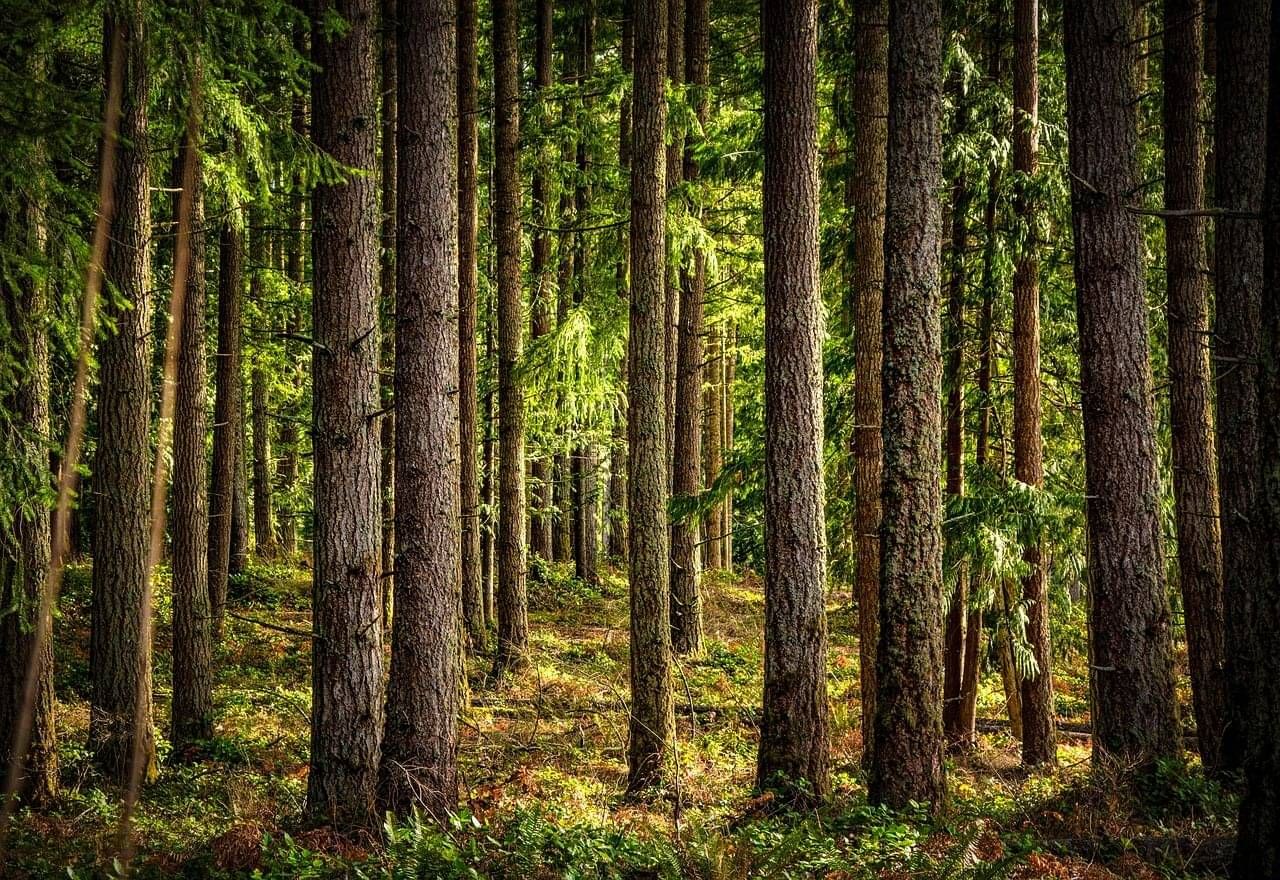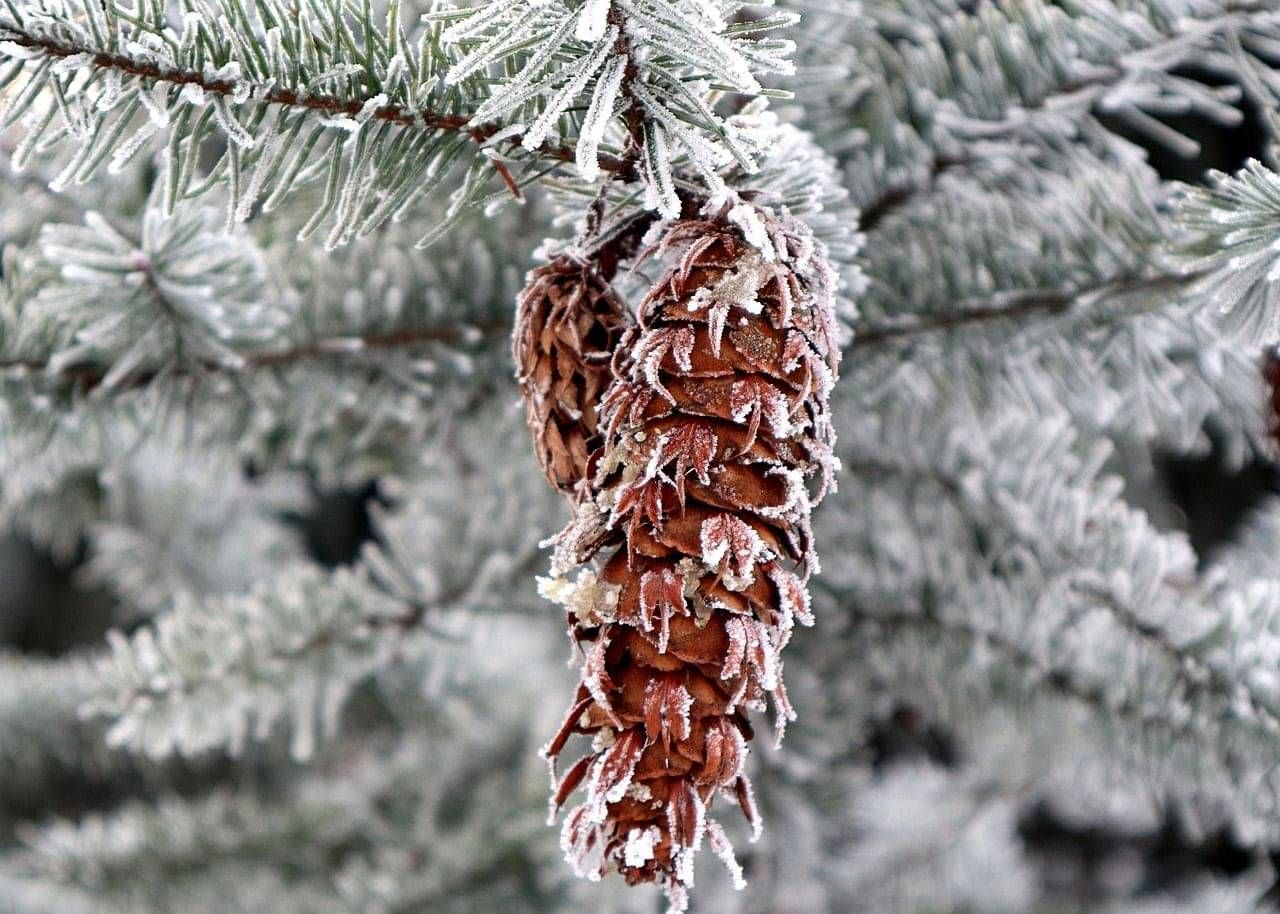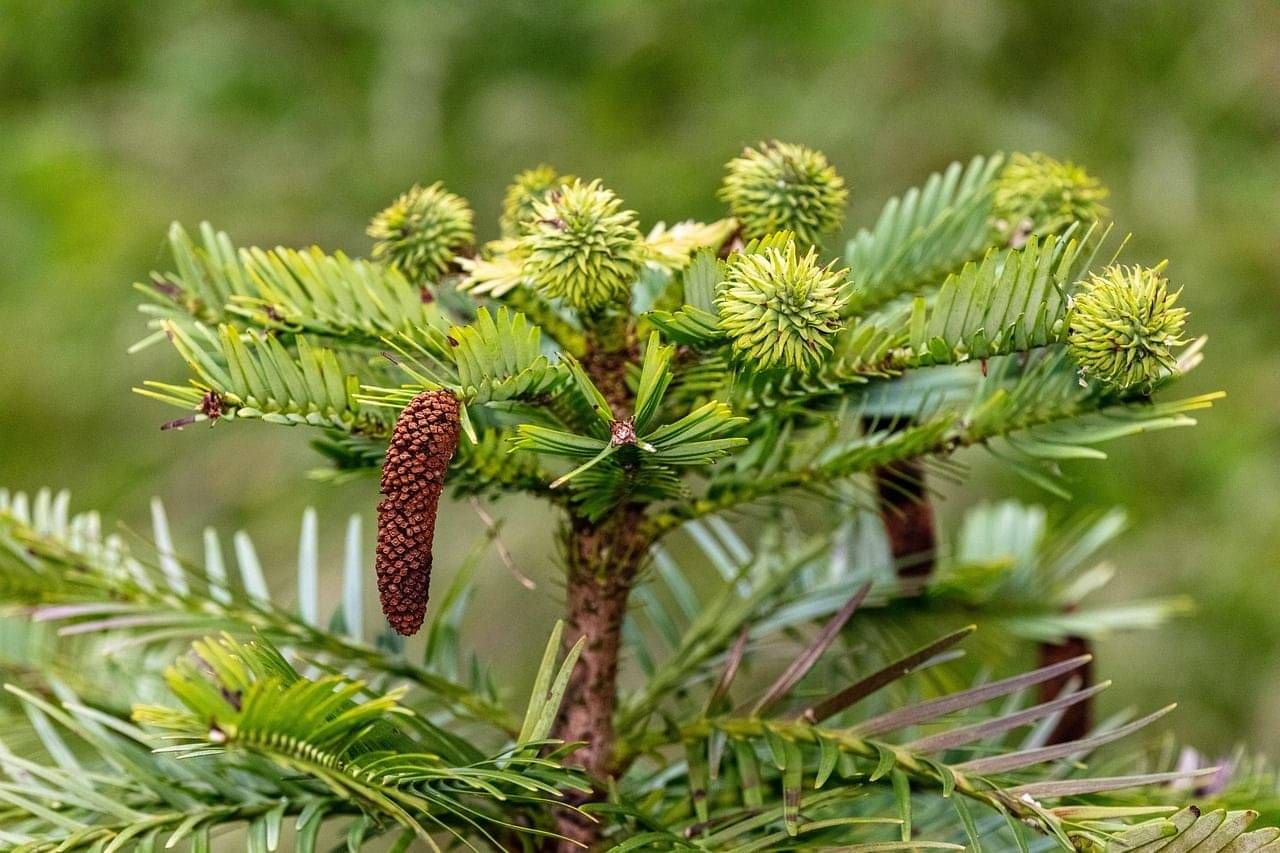Douglas fir
The Douglas fir (Pseudotsuga menziesii) is an evergreen conifer species in the pine family, Pinaceae. It is the tallest tree in the Pinaceae family. It is native to western North America and is also known as Douglas-fir, Douglas spruce, Oregon pine, and Columbian pine. There are three varieties: coast Douglas-fir (P. menziesii var. menziesii), Rocky Mountain Douglas-fir (P. menziesii var. glauca) and Mexican Douglas-fir (P. menziesii var. lindleyana).[10]
Despite its common names, it is not a true fir (genus Abies), spruce (genus Picea), or pine (genus Pinus). It is also not a hemlock; the genus name Pseudotsuga means "false hemlock".
Douglas-firs are medium-sized to extremely large evergreen trees, 20–100 metres tall (although only coast Douglas-firs reach heights near 100 m) and commonly reach 2.4 m in diameter, although trees with diameters of almost 5 m exist. The largest coast Douglas-firs regularly live over 500 years, with the oldest specimens living for over 1,300 years. Rocky Mountain Douglas-firs, are less long-lived, usually not exceeding 400 years in age.
There are records of former coast Douglas-firs exceeding 120 m in height, which, if alive today, would make it the tallest tree species on Earth.
The leaves are flat, soft, linear needles 1.5–4 centimetres long, generally resembling those of the firs, occurring singly rather than in fascicles; they completely encircle the branches, which can be useful in recognizing the species. As the trees grow taller in denser forest, they lose their lower branches, such that the foliage may start as high as 34 m off the ground.
The bark on young trees is thin, smooth, gray, and contains numerous resin blisters. On mature trees, usually exceeding 80 years, it is very thick and corky, growing up to 36 cm thick with distinctive, deep vertical fissures caused by the gradual expansion of the growing tree. Some of the mature bark is brown, while other parts are lighter colored with a cork-like texture; these develop in multiple layers. This thick bark makes the Douglas fir one of the most fire-resistant trees.
The male cones are yellowish red, 5–12 mm long. The female cones are green when young, maturing to reddish-brown or gray, 6–10 cm long; they are pendulous, with persistent scales, unlike those of true firs. They have distinctive long, three-pointed bracts which protrude prominently above each scale and are said to resemble the back half of a mouse, with two feet and a tail. The seeds are 5 mm long, with a longer wing.



Visit Our Site
89 Thornton Road
Cambridge
Waipa
New Zealand
Donations
Kiwibank, 38-9005-0635102-01

